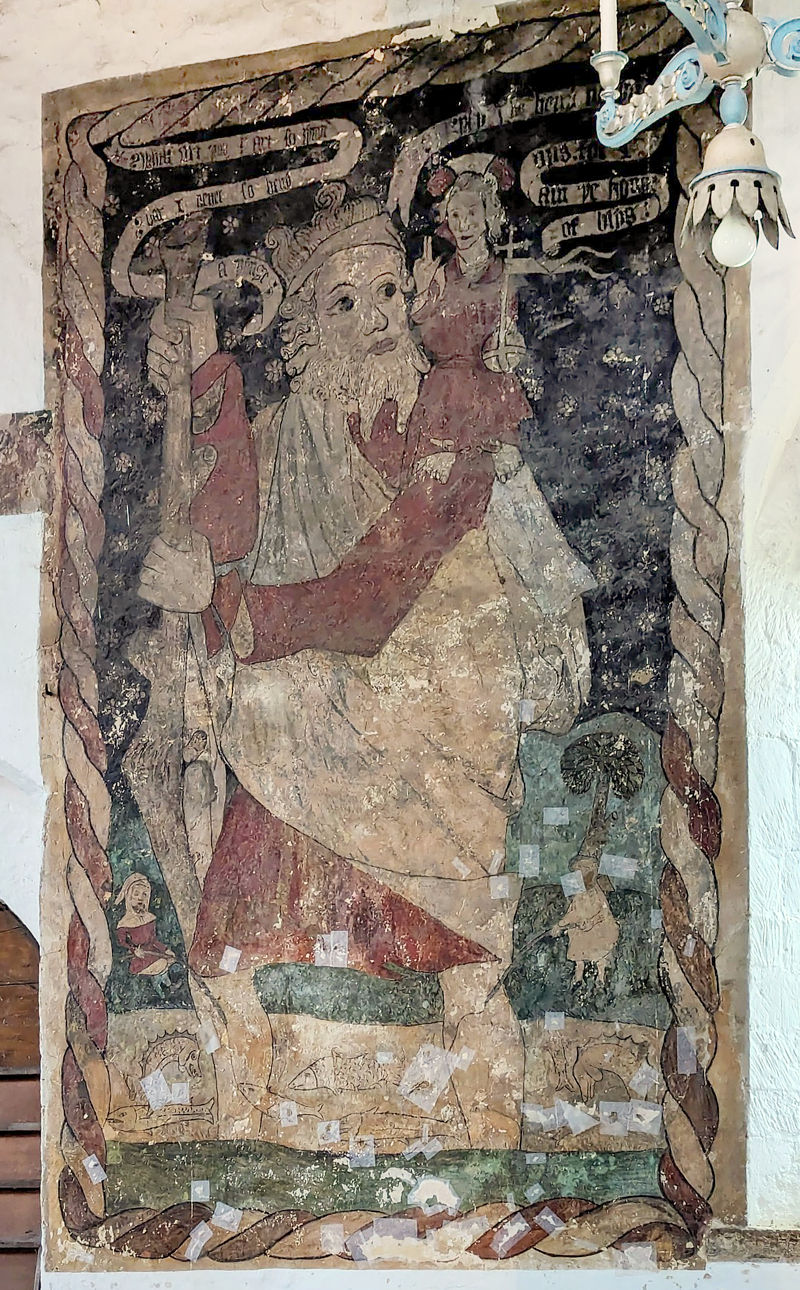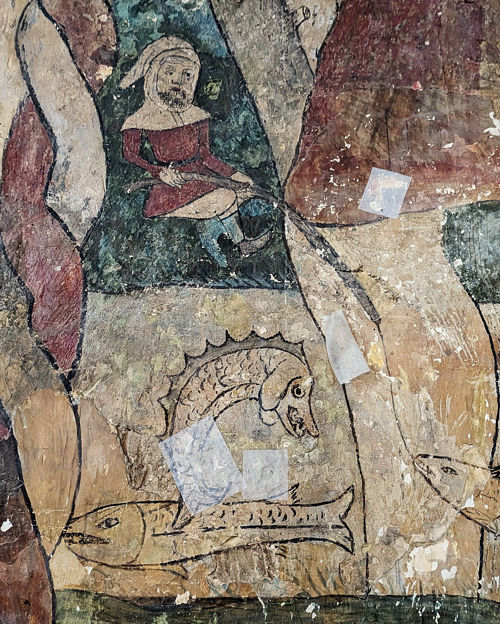Horley, Oxfordshire (†Oxford) C.15
St Christopher

This fifteenth-century example is noteworthy for the inscriptions, in which a dialogue between the saint and the Christ Child he carries on his left shoulder appears in the inscribed scrolls surrounding the two heads. Christopher’s speech to the Child is not really clear now, but a local antiquarian in the later 19th century deciphered it as ‘What art thou that art so he…bar I never so hevy a thynge’¹, which accords well enough with the account given by Caxton in his Golden Legend version.
![Detail of the Christ Child and inscription: ‘Ye [that] I be hevy no wonder nys, for I am the kynge of blys’](images/HorleyStChristopher1.jpg)
The Child, who has the tripartite halo signifying the Trinity and holds an orb of the world with a pennant resembling the Vexillum usually carried by the Risen Christ, replies ‘Ye [that] I be hevy no wonder nys, for I am the kynge of blys’, and a word or two of this can still be made out in the detail above. The inscriptions are in English (unlike, say, that in the earlier example at Woodeaton, also in Oxfordshire) and the Horley painting is the only one I know of to feature the actual conservation between the two parties, although there were probably once many more.

There are a few further contextual details – a man fishing at the lower left, with the leaping sturgeon seen in other St Christopher paintings shown below him. The hermit is there, too, on the opposite bank of the river, in a short robe with lantern (very hard to see) in hand and a flourishing tree painted above him. The light blue pigment in the lower part of the painting has kept its colour remarkably well, although it is very unlikely that fabulously expensive ultramarine pigment would have been used for mere background detail; this may be the ‘fake blue’, produced by skilful mixing of black, white and red, of which EC Rouse spoke.².
The painting of St Zita, patron saint of household servants at Horley, has been on the site for some time, and there are two other dubiously identifiable paintings, one perhaps an Annunciation, reduced to fragments now.
Website for St Etheldreda’s, Horley
¹ Archeological Journal, Vol. 13, p. 416
² EC Rouse, Medieval Wall Paintings, Shire Publications, p.25
† in page heading = Diocese
Photos 1 & 3 © Fiona Chartres 2024
Photo 2 © Stephen Dunn 2024